Auke Visser's MOBIL Tankers & Tugs Site | home
"Mobil Eagle", Re-engined in 1979
Originally powered by a steam turbine, this vessel was re-engined between June and September 1979
with two Pielstick 12VPC4 engines which operate through clutches and reduction gearing to drive a
single shaft.
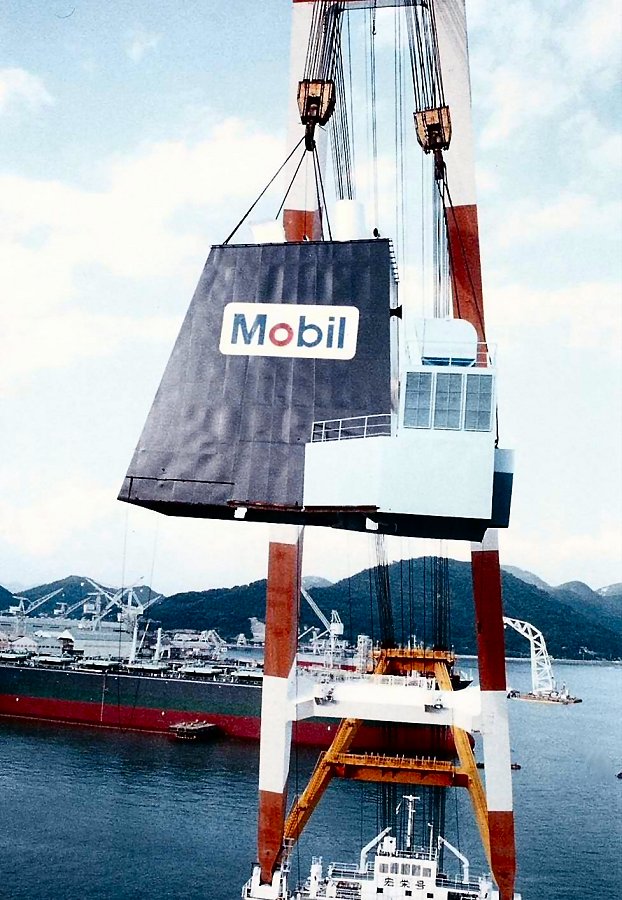
The start of a re-engining project in which a perfectly good but ever so slightly un-economical hot wet fog fan
was renewed by a more economical but ever so un-reliable pair of Pielstick diesel engines.
Sometime in the early 1980's the funnel of the 280,000 odd tonnes Mobil falcon disappears for a change in
exhaust systems.
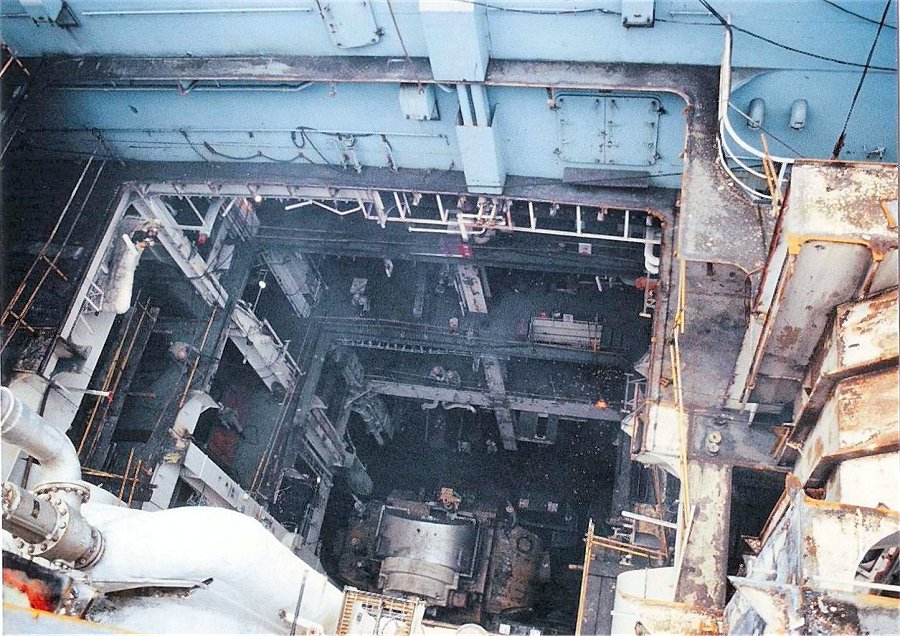
Last look at a now wrecked set of steam turbines, un-economical but very reliable Mobil Falcon Re-engine
early 1980's. Looking down were the funnel used to be.
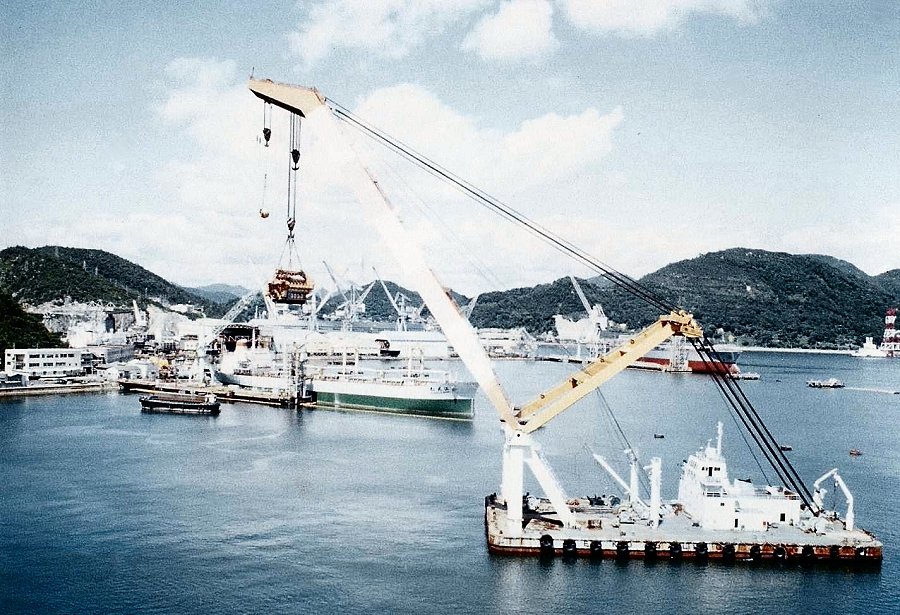
The engineers nemesis the PC4 cometh - doesn't look big enough to power a 280,000 tonne tanker does it ?
- not even two of them !
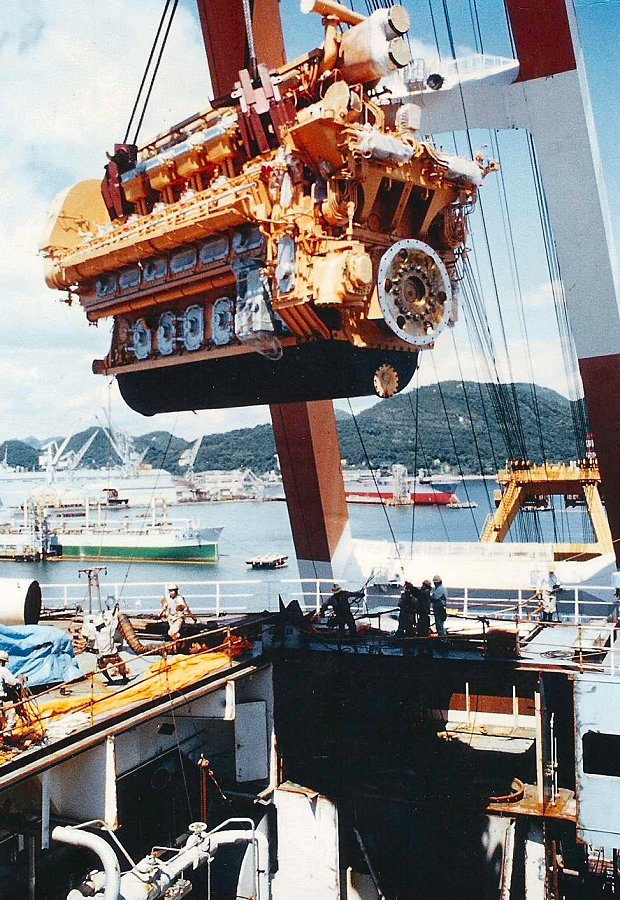
Looks a bit bigger now - a 16,000 bhp engineering nightmare in the form of a Pielstick PC4-12V , one of a pair
fitted during the conversion of the Mobil Eagle from steam turbine to Diesel.
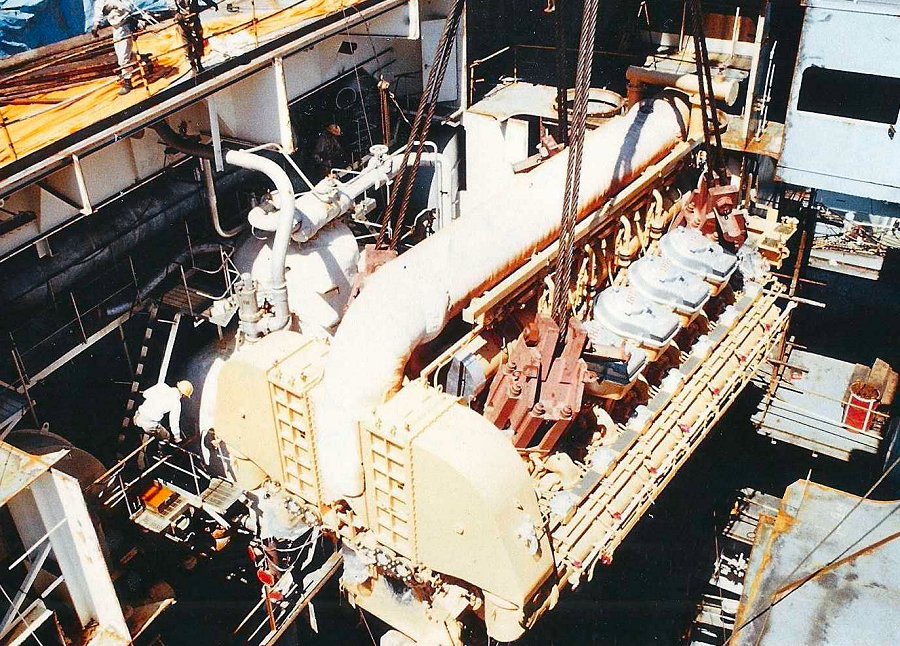
The first PC4-V12 Pielstick being lowered into the Mobil Eagles engine room, the lifting strops are
attached using the outer 4 cylinder head boats - if those wires had parted at this very moment it would
have saved a lot of pain for the future staff of the Eagle.
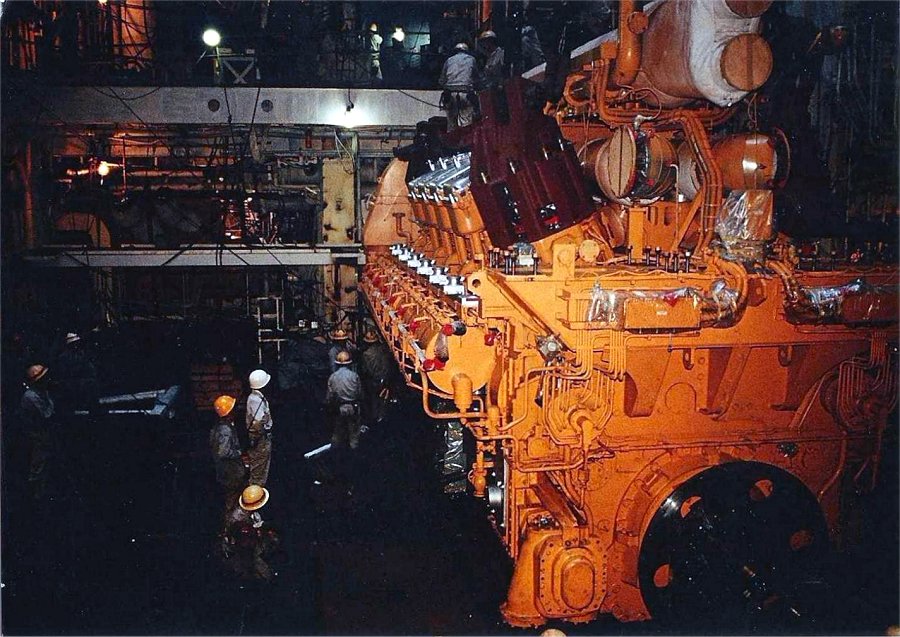
The starboard engine, the first to be fitted land son the new bed plates, Mobil Eagles re-engining in the very
early 1980's, viewed from the aft end.
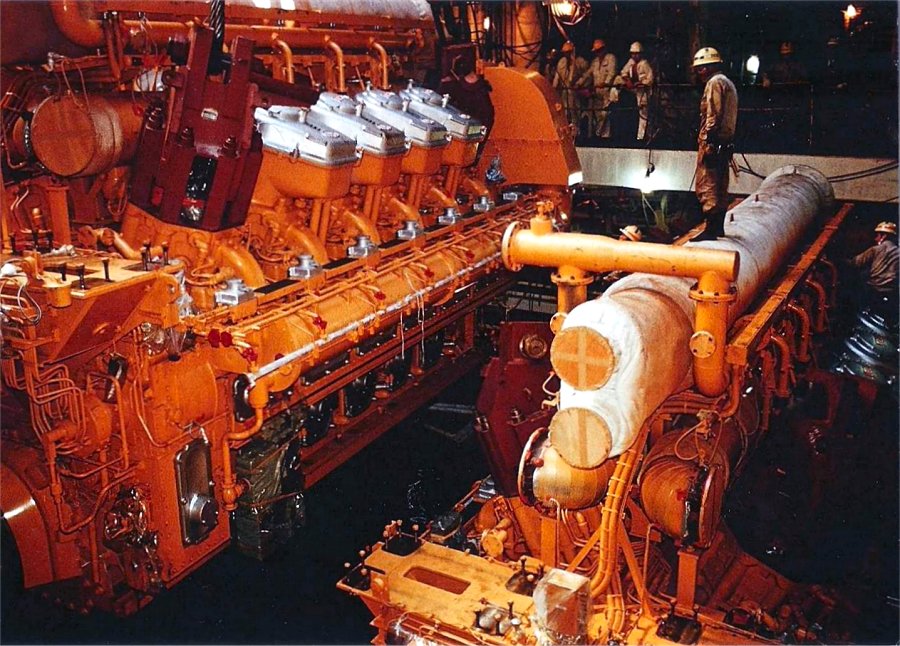
With the starboard engine in place the port v12 is shoe-horned in next to it - Mobil Eagle, Japan early 1980's.
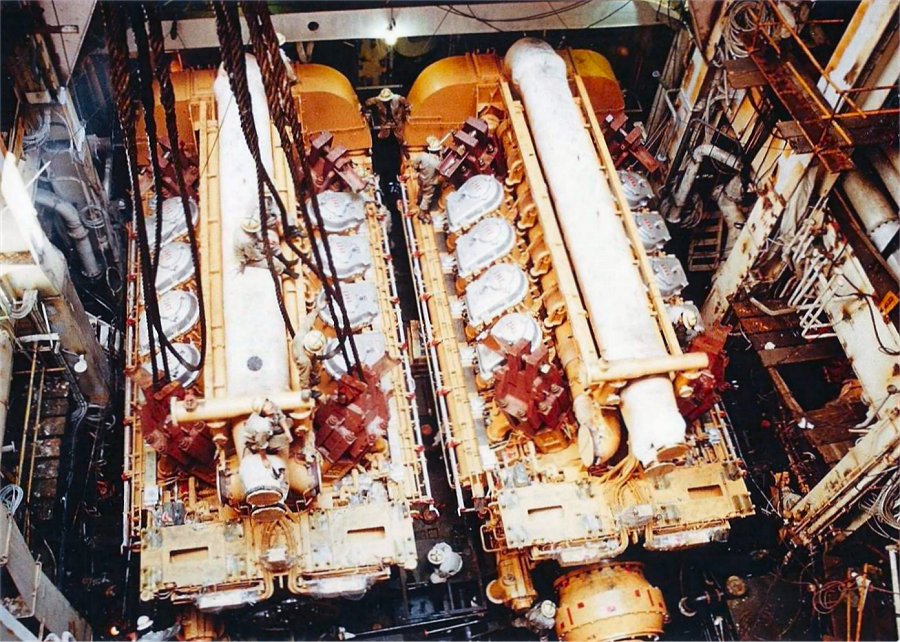
There used to be plenty of room down there - no room to swing a sledge hammer now
Mobil Eagles undoing nearly complete.
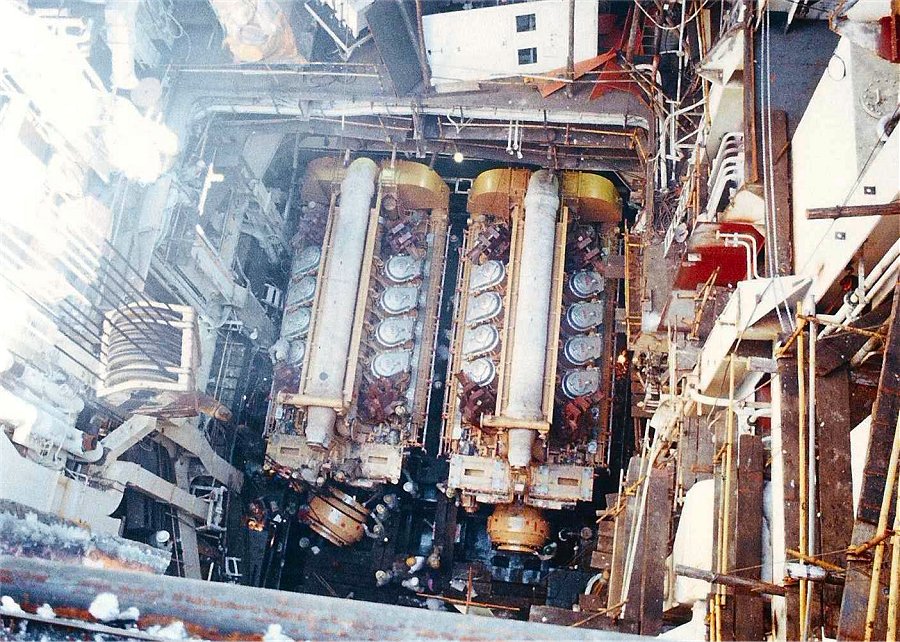
The pairof 16,000 BHP Pielstick PC4-12V diesels in place.
There are no turbo chargers fitted as yet and the four corner cyl heads are still to replace the lifting gear
however the engine builders are now fitting the NABCO twin cone pneumatic clutch onto the port engine,
Japan early 1980's.
Once the turbo chargers etc were fitted this area ( boiler level) was decked over with small spares hatches
remaining to lower the frequently eaten exhaust valves, cylinder heads, liners pistons et al , due to the very
small area below this deck there was insufficient room for full size air coolers so huge ducts were run up through
the engine room to the funnel deck (right aft of the bridge wings) from where the air was sucked into the engines.
This was a great idea and initially resulted in bridge staff wearing ear defenders on the bridge wings until sound
baffles were fitted.
( All photos Copyright "Pirate" )